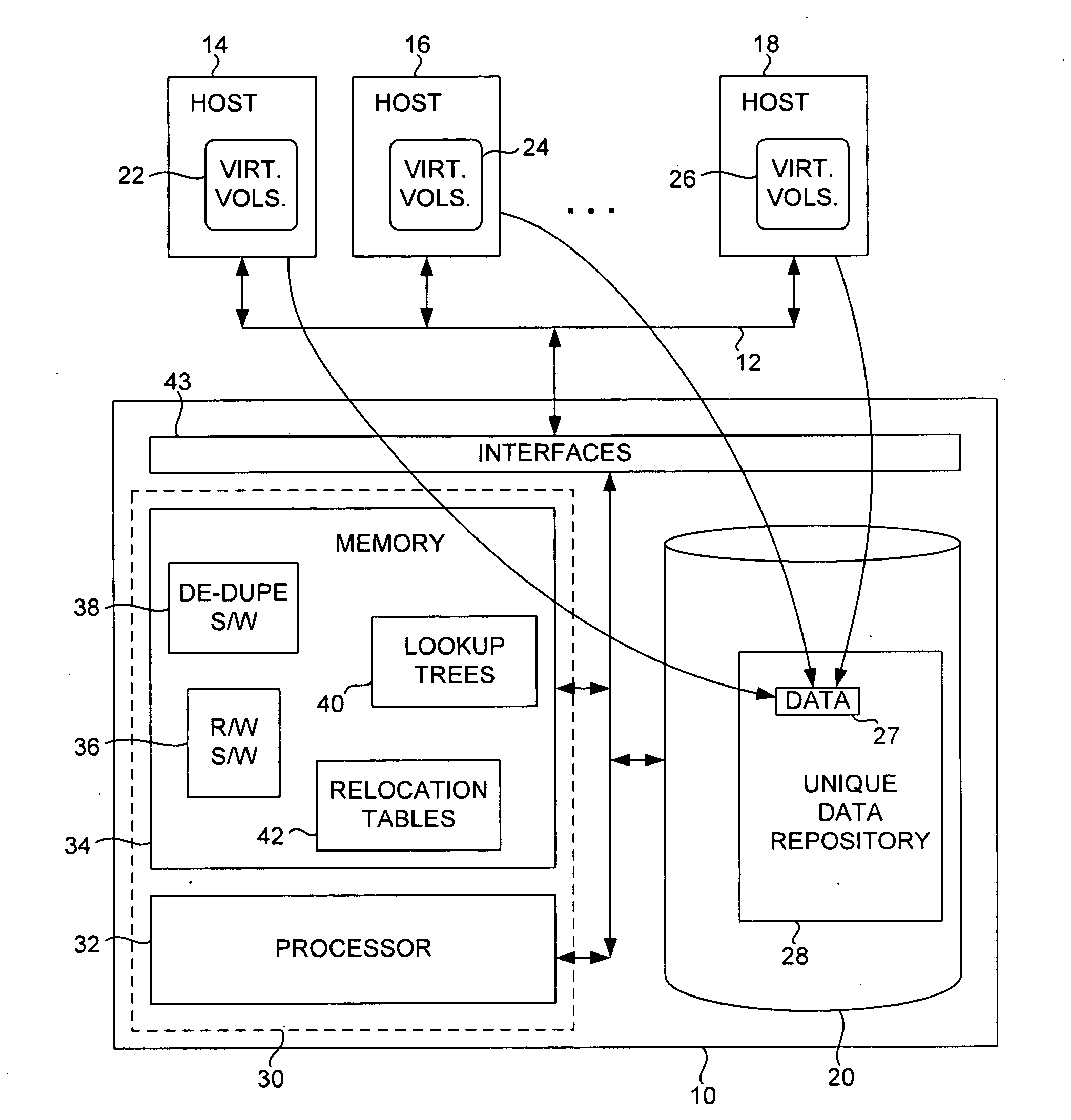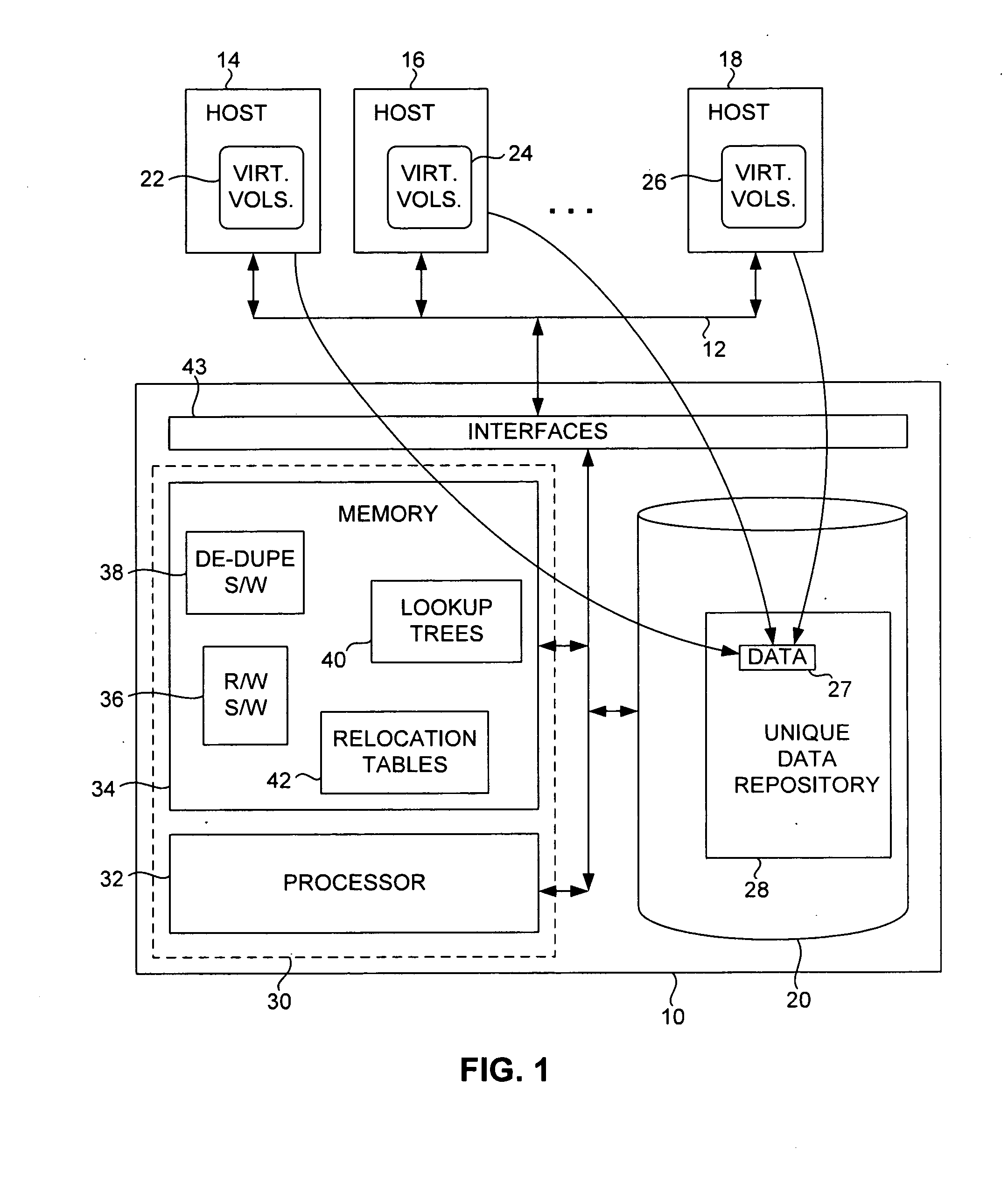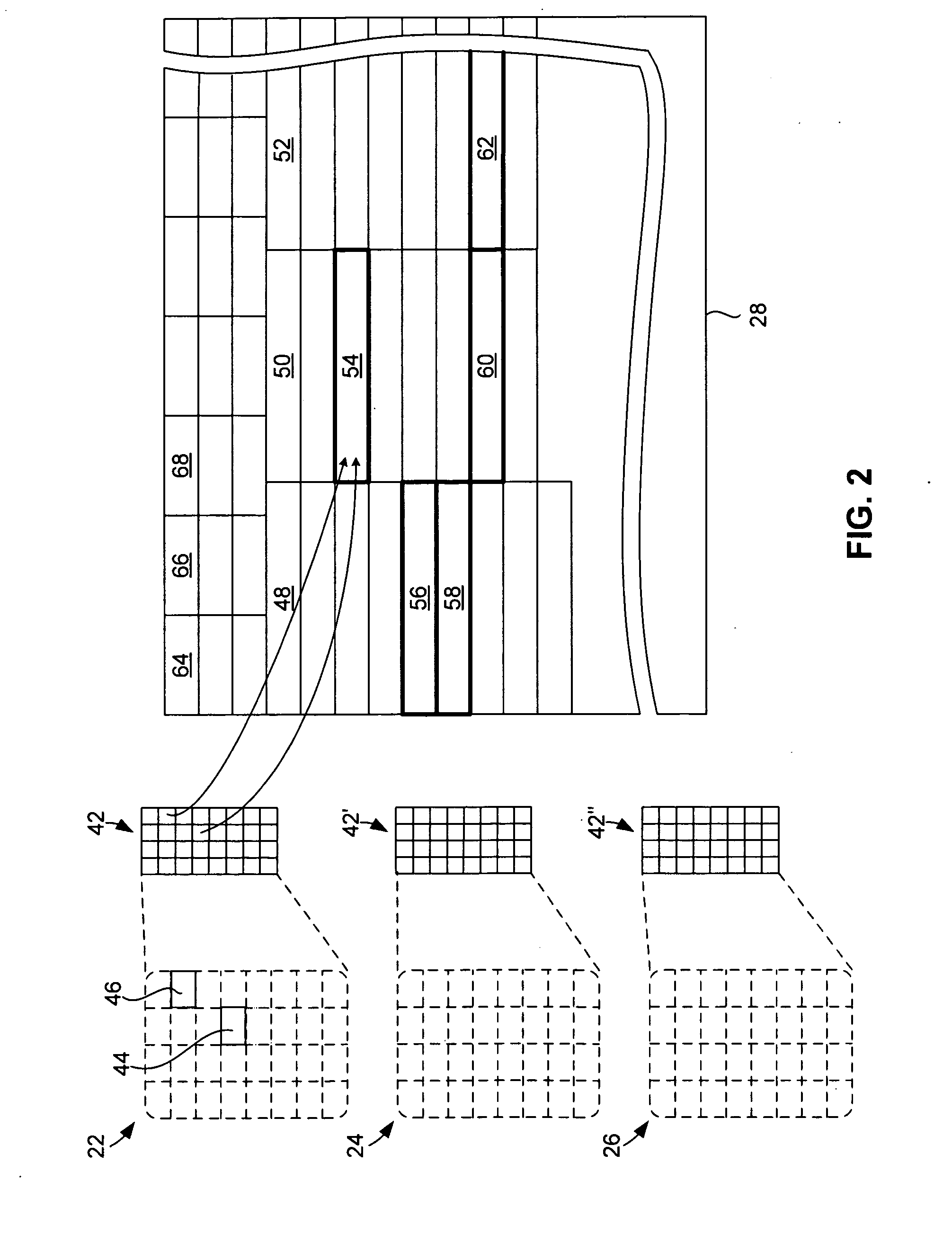Block-level data de-duplication using thinly provisioned data storage volumes
a data storage volume and block-level technology, applied in the field of data deduplication in data storage systems, can solve the problems of inefficient use of storage resources, waste of data storage redundancy, and inefficient storage of redundant data, and achieve the effect of consuming computation resources inefficiently by strong hash algorithms and central processing units or cpu
- Summary
- Abstract
- Description
- Claims
- Application Information
AI Technical Summary
Problems solved by technology
Method used
Image
Examples
Embodiment Construction
[0016]As illustrated in FIG. 1, in an illustrative or exemplary embodiment of the invention, a data storage system 10 communicates via a data network 12 with a number of hosts (computer systems) 14, 16, 18, etc. Although in the exemplary embodiment hosts 14, 16, 18, etc., are described for purposes of clarity of illustration as separate systems, e.g., in physically distinct computers, in other embodiments they can be virtual hosts that share a computer system with each other or with other elements. Data storage system 10 can be, for example, a fileserver or other network server, a RAID (redundant array of inexpensive disks), SAN (storage area network) system, or any other system in which data can be stored in and retrieved from one or more persistent storage devices, such as disks 20. Only the elements of data storage system 10 that are relevant to the exemplary embodiment of the invention are illustrated, and elements relating to other functions, such as file or database management...
PUM
 Login to View More
Login to View More Abstract
Description
Claims
Application Information
 Login to View More
Login to View More - R&D
- Intellectual Property
- Life Sciences
- Materials
- Tech Scout
- Unparalleled Data Quality
- Higher Quality Content
- 60% Fewer Hallucinations
Browse by: Latest US Patents, China's latest patents, Technical Efficacy Thesaurus, Application Domain, Technology Topic, Popular Technical Reports.
© 2025 PatSnap. All rights reserved.Legal|Privacy policy|Modern Slavery Act Transparency Statement|Sitemap|About US| Contact US: help@patsnap.com



